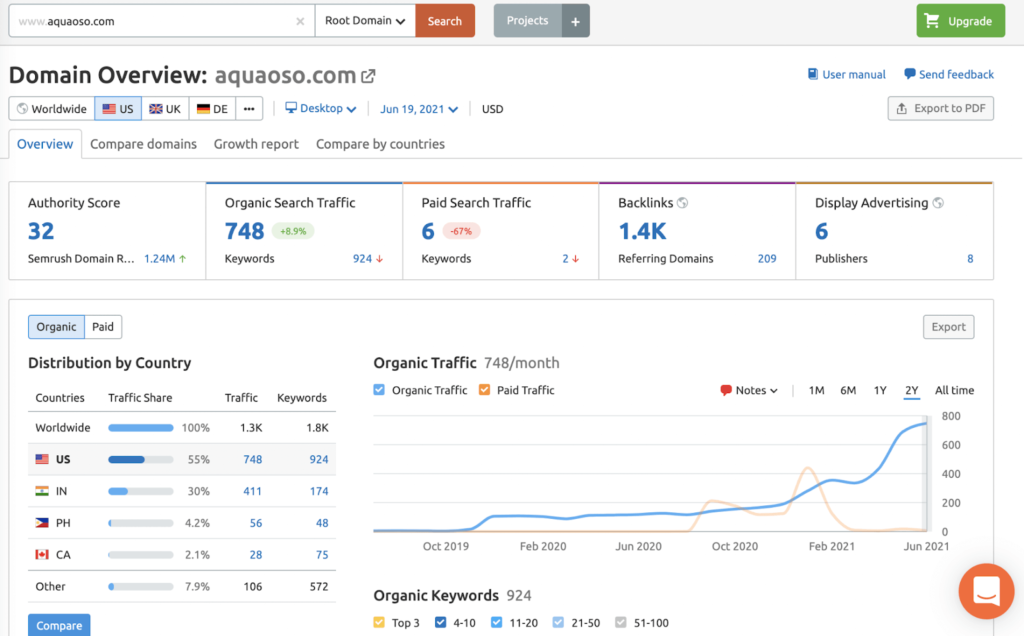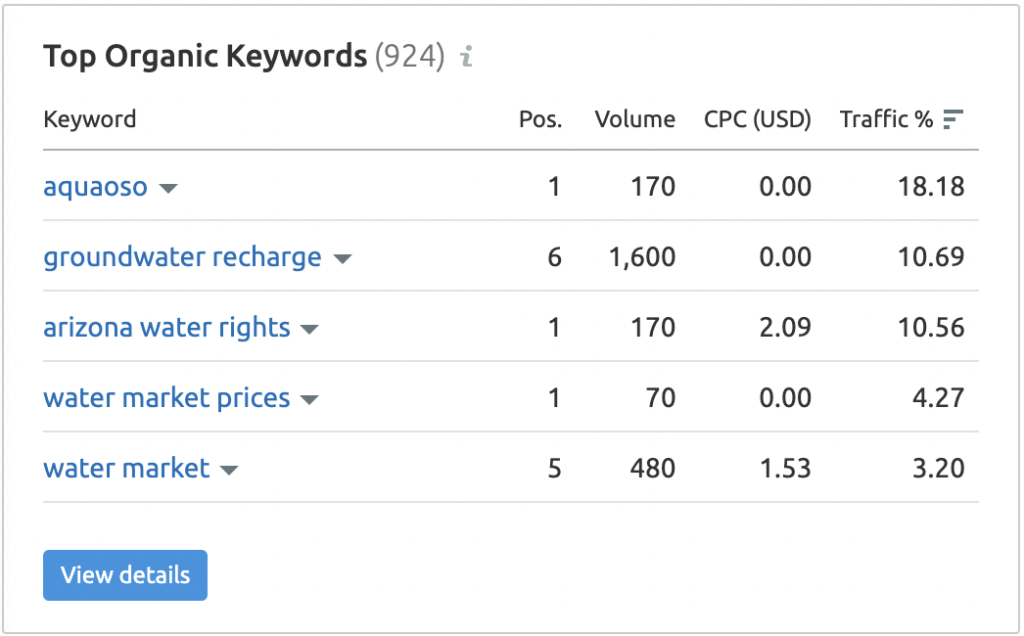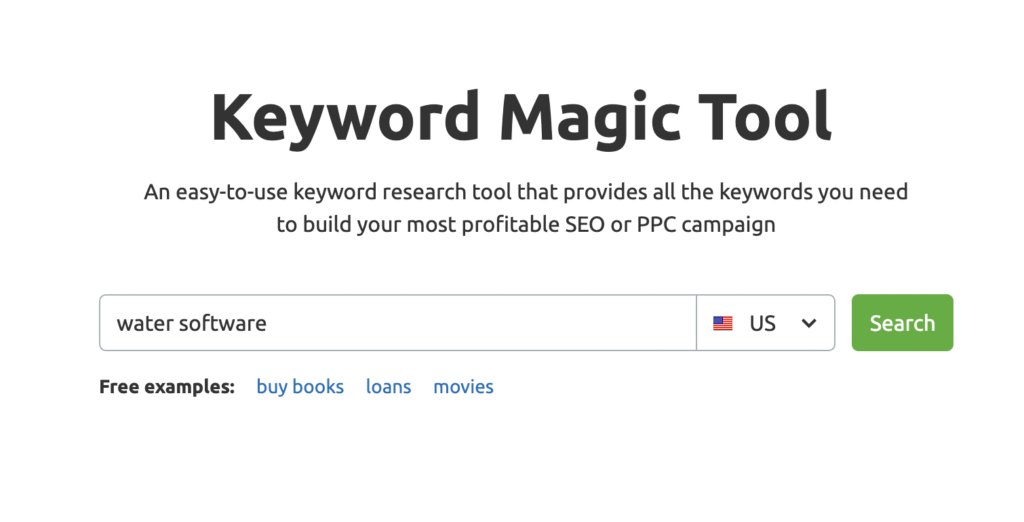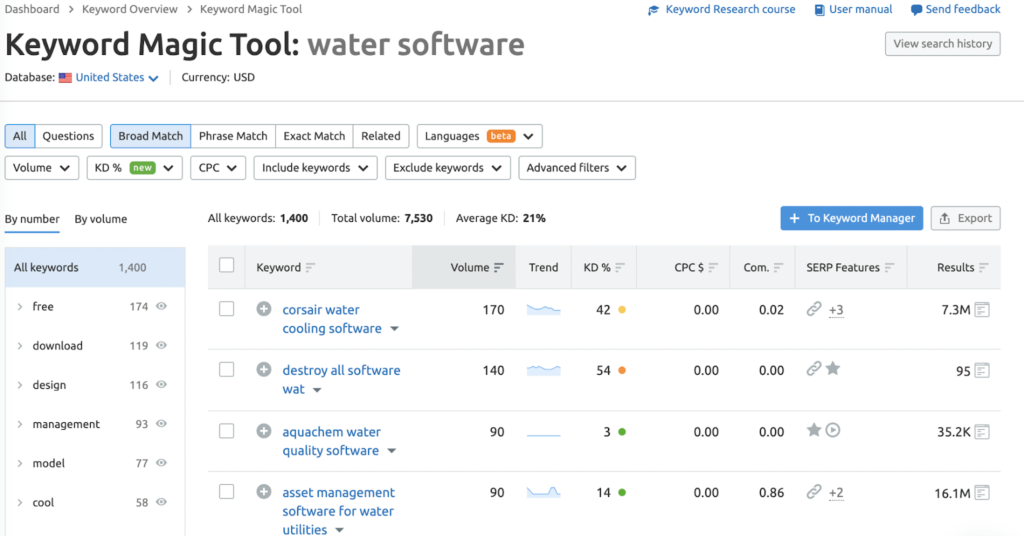The SaaS SEO Framework: An Actionable Strategy Guide to implementing SEO for Proven Results
Another framework and something else you are not doing to optimize my business. We get it.
Frameworks, strategies, tactics, and webinars on how to improve your lead generation and brand exposure are everywhere. However, this framework is one that is used by big SaaS companies, like Salesforce and Twilio, and smaller, like SurveyMonkey. All it takes is a plan, execution, and persistence.
The SaaS SEO Framework
SEO (Search Engine Optimization) assists websites by leveraging organic search to grow traffic. SEO software company ahrefs explains that SEO involves activities like keyword research, content creation, link building, and technical audits. The SaaS SEO Framework provides the steps needed to understand and implement key SEO activities that provide long-term growth for your business.
Understanding the SaaS business model
SaaS (Software as a Service) business models are different from traditional business models because the software is sold as a subscription service as opposed to single sale for a product. Remember when you had to buy Microsoft Office in disc format every time there was a major upgrade? Microsoft’s transition to Office 365 shows how the SaaS model permeates the software business landscape.
The SaaS business model is perfect for SEO because it is able to iterate and adapt to a consistently changing market. SEO rewards marketing strategies that are equally as responsive to changing market interests. The SaaS SEO Framework combines the nimbleness of the SaaS business model and the power of SEO marketing.
SaaS SEO Ranking
The SEO ranking algorithm changes from year to year. The top factors for SaaS SEO Ranking in 2021 are:
- Consistent publication of engaging content
- Keywords
- Backlinks
- Niche expertise
- Internal Links
- User Engagement
The other nine factors are technical improvements. What does that tell us about where to put time and effort for increasing your organic search? It is not about deeply technical improvements, but the content and activities mentioned in our SaaS SEO Framework.
Keywords
Keywords are at the top of what Google looks for when serving results to your potential customers. The impact keywords have on organic search traffic stems from an understanding of your target market and how they are searching for what you have to offer. Keyword research can provide answers to the following questions:
- What is your target market searching for?
- What is the frequency and quantity of their searches?
- How do they want to consume your content?
As we will address later in our SaaS SEO Framework, answers to these questions are key to guiding your SaaS SEO content strategy.
Technical Structure
How a site is structured for web crawlers, accessibility software, and humans in general are essential to ensuring the time and resources put into content and keywords can thrive. Often companies in a hurry to grow slap together a website and continue to add menus, pages, and subpages until the site is a digital rats nest. It’s okay. The first step is recognizing where improvement is needed through a technical audit.
Post audit, there are a host of things to improve the technical performance and organization of your website to allow that wonderful content to make it to your potential customers.
Content Strategy
We want you to spend time and resources where they will 10x your business. Content is one area where you should focus on for a long-term growth strategy.
Content strategy requires an in-depth understanding of your customer personas. Creating these personas takes some thought around your product, business, and customer’s journey. For many businesses, this level of introspection provides an opportunity to step back and work on the business instead of in the business.
Offsite Strategy with Link Building and PR
An offsite strategy is critical to increasing your website and brand’s domain authority. Google wants to point people to the most helpful and credible information possible. The higher your domain authority, the more likely your posts will come up on the first page of a Google search result; the golden ticket to organic search growth.
Investment in the SaaS SEO Framework
We hope this overview sparks an interest in diving deeper into the SaaS SEO Framework. By the end of this guide, you will have a solid understanding of both how to implement the framework and the return on your investment by choosing to pursue SaaS SEO to grow your business.
SaaS SEO Keyword Research
In this section we are focusing on how you find keywords, prioritize the top keywords, and achieve quick wins after your research is complete.
Collaborate with your team around a SaaS SEO kickoff discovery workshop
A kickoff SaaS SEO discovery session is a critical first step in the keyword research process. This should at least include the head of marketing, head of sales, head of product, and the CEO. The collaborative vision of what is being built, how it is being positioned in the market, and what current or prospective customers are saying about the business is invaluable.
The kickoff should start with general questions like:
- In an ideal world, what do we want to be found on Google for?
- What do we not want to be found on Google for?
- What questions are our ideal customers trying to answer?
Next, you may progress to more specific questions like:
- What features and functionality does our product have?
- Who are the direct competitors? Indirect competitors?
- What categories does the product or service fit in? Which adjacent categories?
- What are the jobs our customers hire our product or service to do for them?
- What verticals or industry sectors are you pursuing?
- What are the industry terms your customers use?
- Which products and services does your product or service integrate with?
For example, if your keyword is “climate risk,” then there is an opportunity to do research around “climate risk analytics,” for how businesses are measuring climate risk. Even further, it could be “climate risk for supply chains,” or “climate risk for real estate,” targeting specific industries. By looking at some of the ancillary keywords, you can build up domain authority on less competitive, niche terms that, in the long run, build your authority towards a broader keyword like “climate risk.”
Time-saving Tip
Use prior customer discovery interviews, customer success meetings, and sales documentation in your CRM to inform which problems your customers are searching for answers to and the jargon used in the industry. This will remove the hypotheticals and it is work you already completed!
Create a keyword list and analyze the competitive landscape
Now that you have a smattering of potential keywords, it is time to use a little technology to help you along. There are several SEO research tools out there. One of the most popular is SEMRush.
Step 1: Initial Search
- Enter your domain into the search box and select jurisdiction you are interested in or leave it on ‘Worldwide.”:

- As you scroll down the dashboard, you will find all of the keywords and their ranking:

- Repeat this process for each of your competitors and export the individual ranking data for each one.
Step 2: Keyword Magic Discovery and Organization
- Enter the keywords from the discovery kickoff into the SEMRush Keyword Magic Tool. You can use variations on the keyword and see where you rank on keyword, seed keyword, volume, cost per click (CPC) and competitive density.


- Import all of your findings, there will be many, into a spreadsheet to organize the data and better see where your competitors rank. Each competitor should have their own tab in the spreadsheet.
- The spreadsheet should have a column for each competitor and a row for each keyword. You will need to insert your competitor’s url in SEMRush to get the values for the table below.
| Keyword | You | Competitor A | Competitor B |
| Risk | 32 | 55 | 30 |
| Risk Analytics | 41 | 23 | 44 |
Prioritize your keywords
Now the important process of prioritizing those keywords. Once you have all your keywords in a spreadsheet, create a new column for “Priority.” You can use “High”, “Medium”, or “Low” to indicate priority level. Another approach is score 1 to 10.
The goal is to surface the top 10 to 15 keywords. These top keywords will guide your SaaS SEO strategy for thought leadership, demand generation, owning a space, or even creating your own category.
Map keywords from the SaaS SEO keyword research to the customer journey
Understanding and mapping your customer’s journey is foundational to a SaaS business. SaaS SEO is no different. We will need you to add another column to the right of the priority column called “customer stage.”
Why? Because knowing which stage a customer is in will help you with what keywords and content is most helpful to your customer at that particular moment in the journey. Google rewards the most helpful content that customers engage with the most. The right information at the right time is always the most helpful.
Time-saving Tip
You can either add another column or use a color to denote which keywords may fit better as a problem-solution webpage vs. a blogpost. The more specific a keyword, the better off it is as a blog post.
Determine SEO opportunities and quick wins
You have your spreadsheet mapped to the customer journey. Now you can learn something from your hard work. Where are the places you can gain ground quickly with relative ease?
A source of quick wins are those keywords in the stage of your customer journey where the customer is making a decision. Sort your spreadsheet and look for keywords position 10 to 30 to see where some small optimizations can boost your ranking.
look for opportunities where none of your competitors are ranking. By ranking higher on some of these lower volume search terms, you will build authority and context around your desired search terms and market space.
Build your topic clusters for pillar pages
Topic clusters are important for building out your content using your keywords. People are searching using longer query strings, partially from voice search commands. A byproduct of the move to longer search queries is search results that are looking for both the exact query but also relevant, related queries. For example, a search for “travel bag” would return “backpack,” “travel duffel,” and “travel organizer cubes.”
Content needs to contemplate these potential gaps if you want to remain relevant to these search queries. Topic clusters organize broad topics into clusters of related topics and keywords. The main, broad content is called the “pillar page” and it links to the cluster content via hyperlink.
Pillar pages are longer than normal content. Pillar pages broadly cover a particular topic, and cluster content addresses a specific keyword topic in-depth. You are essentially casting a wide net with the pillar page and the readers you capture are directed to the more specific content with the keywords you wish to rank for.
How do you know which topic cluster to start with?
To ensure that customers engage with your content, think about the broader topics you want to rank for. For example, if you are a SaaS risk analytics company looking to expand into agricultural insurance, then you could start with agricultural risk as a cluster.
After you come up with three clusters, check which keywords and at what stage in the customer’s journey those keywords are at to determine which cluster to start with.
Mind the gap: SaaS SEO keyword gap analysis
A keyword gap assessment allows for SaaS companies to identify where an industry has gaps in content. When someone searches for “crop insurance risk mitigation in Iowa,” then you want to be the top result. You can collect a host of these once you find something that is a gap and build variations on it, such as “crop insurance risk mitigation in the western U.S.”
Before you know it you will rank higher for crop insurance and agricultural insurance. For more information on how this works take a look at the Google RankBrain.
SaaS SEO Technical Structure
A valuable use of resources is to understand and poke holes in the technical structure of your website. A Technical Audit shows you where the web crawlers may stumble when indexing and improving your search rank.
Setup Google Search Console
If you do nothing else for your SaaS company’s SEO, set up Google Search Console. After that, you will want to ensure the following are addressed:
- Check your robots.txt file
- Submit your XML sitemap to Google so their web crawlers can traverse your site easily, try looking for https://domain.com/sitemap.xml.
- Check your subdomains by typing in site:domain.com -www. In the search console to see if there are duplicates or anything, you do not want to be indexed.
- Check your page load times at https://developers.google.com/speed/pagespeed/insights/
- Make sure your site is mobile-friendly by using Google’s Mobile-Friendly Test
- Make sure there are no JavaScript code blocking navigation of your site
- Check pages that might have little to no content and decide to eliminate or merge into another page to reduce issues with ranking.
The above may be addressed through software that specializes in technical audits like a hrefs’ site audit tool.
After you complete post-technical audit adjustments, you should request Google to recrawl your site through the Google Search Console. This may take a day or so for the web crawlers to complete their new crawl.
SaaS SEO Content Strategy
Now that there is a firm technical foundation for us to work on, we should look at content. A SaaS company needs organic search to grow as it finds new niches and creates new markets. A SaaS SEO Content Strategy charts a voyage across unknown waters.
First, ensuring your site and content are organized with the user and the customer journey in mind is valuable and leads to greater user engagement. Since user engagement is a top ranking factor, it is a sound SEO strategy to put effort into content organization.
Second, what is your content production strategy? We suggest thinking about content cadence, categories of content, and distribution channels. Do you need to post daily on LinkedIn? Some other strategies revolve around linking blog posts to feature, industry, or about pages as part of a topic cluster.
Lasty, What is your tactical plan for getting content shipped. We suggest setting up a content calendar in Google Calendar and sharing it with your marketing team. Additionally, make sure you have analytics in place to track user engagement with your pillar pages. We suggest, at minimum, to set up Google Analytics to begin tracking user engagement.
Time-saver Tip
As you think about connecting your topic cluster strategy to clear navigation for users of your website, think about the marketing/sales funnel. Guiding a perspective customer from top-level pages down through blog posts and feature pages to a single call to action ie. “schedule a demo,” or “buy now,” will optimize both SaaS SEO and qualified leads at the same time!
SaaS SEO Link Building
A SaaS SEO strategy must utilize link building. According to Tim Soulo, CMO at ahrefs, “Links are the currency of the web. The websites that have plenty of them are deemed ‘authoritative’ and are rewarded with high rankings in Google. While websites that don’t have any are bound to obscurity.” Likewise, Google Search Quality Senior Strategist Andrey Lippattsev said the two most important factors in getting your site ranked are content and links.
Effective link building is a Public Relations effort and even a LinkedIn Network deep dive. Reaching out to writers and marketing teams in adjacent industries can provide a way to collaborate and get mentioned in a variety of publications.
Some of the non-PR paths to link building are:
- Featured integrations that are added to an integrations directory
- Partnerships with adjacent tools that complete a workflow could lead to cross-promotion on social media and blogs
- Data and trends that may be unique to your business that creates a compelling story and possibly attract other companies to collaborate with you.
Time-saver Tip
If budget allows, engage with a Public Relations professional early. It can take a while to connect your brand, message, and content to journalists and industry analysts. Starting early ensures you will have opportunities once you have built some fantastic content!
Measuring SaaS SEO Results
SaaS SEO metrics provide the leadership team a way to understand the effectiveness of the SaaS SEO results, and the marketing team the ability to learn and iterate on their approach. The top three metrics to watch are:
- Rankings – how you compare to others for a given set of keywords
- Traffic – Your organically generated visitors
- Conversions – conversions generated organically
You can use a tool like ahrefs Rank Tracker to establish your baseline and set up automated monthly reports tracking changes to rankings.
For traffic and conversion metrics, you can start with Google Analytics, and then move on to something like HubSpot or Mixpanel for a more robust solution. Since organic traffic converts at a higher rate than any other channel, it is crucial to track changes in this number and compare it to your company’s marketing and sales activities.
One thing to look out for when tracking conversions is how your business defines a conversion and at what stage of the marketing funnel this takes place. Example conversions are:
- Requesting a demo
- Downloading an ebook
- Downloading an app
- Signing up for a free trial
- Making a purchase
Software that tracks traffic mentioned above can also help you track conversions at different parts of the funnel as long as you have your pages structured well and clicks are tracked on each page.
Timeline to SaaS SEO Results
Three to six months. That is the average time it takes before a company begins to see value in their SaaS SEO strategy. How do you ensure you will have a beneficial result at the end of that three to six months?
- Is your website optimized for SEO?
- Do you have enough content planned for each pillar page and cluster posts?
- Did you begin gathering backlinks from influential writers in your space?
What if your goal is to dominate the top keywords you identified in your keyword discovery? That could take a couple of years.
If you stick to the SaaS SEO Framework we provided you, you will have the best chance to dominate your preferred keywords and grow your SaaS business.
